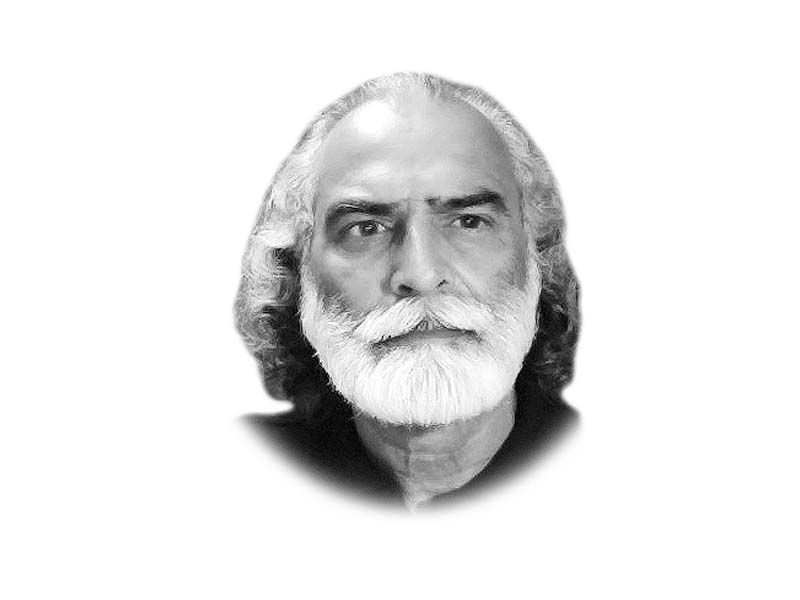
In emerging democracies, instead of conducting serious research on elections, organised election observation by citizen groups takes precedence. Though a highly-needed exercise, mere monitoring of the conduct of election without digging deeper into the underlying factors and possible impact of the outcome tells only a fraction of the electoral reality. No wonder, little scholarly literature is available on Pakistan’s elections.
However, independent election observers in Pakistan have been producing a lot of good work. It is in great demand as it is highly valued by political parties, the media, the ECP and the public. In this regard, the Free and Fair Election Network (Fafen) has been playing a leading role. Keeping its tradition alive, Fafen deployed 40 trained, experienced and non-partisan observers in the NA-120 constituency. They observed pre-poll environment and on the polling day, they covered 113 polling stations. In order to ensure standardised observation, each observer used the same checklist that was prepared in light of the electoral laws and code of conduct. Sangat — a Fafen member organisation — was responsible for administering the conduct of the observers.
While the observers used the standard checklist, we both adopted qualitative tools like the transact walk, participatory observation and the but-and-why tools to dig deeper into election issues during our visits from 15-17 September. We covered most of the union councils falling in the constituency. We talked with women and men. On the polling day, we visited nine polling stations and their surrounding environs.
Here are the findings: first, as most Pakistan’s voters don’t use their right to vote, it was necessary to probe its causes. Almost everyone we interviewed strongly said “Yes, I will vote.” But, the turnout at the end of the day was just 40%. Perhaps, they lacked the will to act upon their intention. Therefore, it is imperative to understand the underlying factors of this phenomenon too if we are interested in enhancing the turnout in future elections. After the 2002 general elections, our organisation — Pattan Development Organisation — had conducted a comprehensive study on voting behaviour. Most respondents mentioned three reasons that deterred them from voting. 1) “My vote would not make any difference.” 2) “All parties/candidates look alike and they are corrupt.” 3) “I was busy on the polling day.” It appears similar factors prevented most voters from voting on September 17th.
We restrained from asking direct questions from respondents about their party affiliation. Lahoris being Lahoris — blunt and frank — would not hide their political likes or dislikes. For instance, when we asked if they would vote for the same party in the by-election they had voted for in 2013 or 2008, instead of replying yes or no, almost everyone named a party. Most said in 2013 they had voted for the PML-N, now they would not. On further probing, many mentioned the PTI, while few also named the MML or the LYR, etc. Some voters might have switched from the PTI to the PML-N. Major factors they stated were: the PML-N’s anti-judiciary/establishment campaign, pro-India policy, split within the Sharif family, poor sanitary conditions, unemployment, price hike and slump in business. The poll results show massive growth in the vote bank of religious parties and surge in the PTI’s vote bank, and this corroborates our findings.
We also discovered one extremely disturbing trend. During our interaction with female voters a woman said her husband took away her CNIC because she was going to vote for a candidate different from his. On further probing, more cases of this nature surfaced. During the Lodhran NA-154 by-election observation, when male voters in front of a rural polling station were asked how their female voters decide whom to vote, a man said “jis ki beevi uska vote” — a wife’s vote is a husband’s property. Sadly, there appears no difference between the educated men of Lahore and the illiterate ones of Lodhran. Since the gap between male (45%) and female (32%) turnout was unprecedented in Lahore, investigation should be conducted to ascertain prevalence of female CNICs’ confiscation.
Discussions held with the supporters of various candidates inside the election camp offices revealed interesting trends. First, a significant number of party activists didn’t belong to Lahore or to NA-120. Some came from Faisalabad, Chiniot, Rawalpindi, Peshawar, etc. Many mosques in the constituency turned into an election hub of religious parties. Because of this the candidates of the MML and the LYR had comparative advantage. As we know almost all mosques that are run by management committees consist of local people. According to some estimates, there are about 250 mosques in the constituency alone and if each committee consists of 12-15 persons, these two parties have roughly 4,000 committed voters. It is highly likely that most of their family members would have also supported the same party. Roughly their total numerical strength matches the total vote bank (13,000) of these two parties.
We also discovered that the election campaign was largely limited to bazaars and main roads. In the interior of mohallas, we found little sign of electioneering — flags, banners and posters were conspicuously absent. There existed no ownership of any candidate in front of houses. We were in a position to predict low turnout.
Fafen observed “considerable a surge in the incidence of violations.” It is therefore imperative to take full advantage of these lapses for improvement. For instance, in some polling stations we found polling agents sitting outside the polling room. Presence of polling agents in front of polling staff and ballot box is as essential as CNIC for voting. Without them, transparency of polling disappears.
Also the presence of 29,000 unidentifiable voters on the electoral rolls and letting them to vote is shameful. If you read this together with the results of the biometric machines, the whole exercise seems scandalous. According to the ECP, the machines “failed to read fingerprints of 12% (39,000) voters.” Let’s hope there is some overlapping between the two categories. Otherwise, one is forced to say 20% of the NA-120 roll was problematic. The secretary of the ECP said on September 22nd that “if this (12%) ratio is taken as average, the machines will not be able to verify 11.6 million voters.” Such a scale of blunder could jeopardise the 2018 general election.
Conclusion
The Election Commission should concentrate on — first, insulating itself from the political influence; second, building capacities and skills of polling staff and third, establishing polling stations in adequate buildings. Further, political parties need to build democratically elected party chapters at the polling station level if they wish to compete against organised clergy.
In order to better understand our polity, citizen monitoring groups should build collaborative mechanisms with scholars and academics. The CSOs must find ways to liberate the poorer sections of society and women from coercion, harassment and greed. This is perhaps the only way forward towards improving citizens’ ownership of our electoral system and towards making our governance democratic. The NA-120 by-election provides many lessons; let’s harvest them by empowering the ECP and the voters.
Published in The Express Tribune, September 24th, 2017.
Like Opinion & Editorial on Facebook, follow @ETOpEd on Twitter to receive all updates on all our daily pieces.












COMMENTS
Comments are moderated and generally will be posted if they are on-topic and not abusive.
For more information, please see our Comments FAQ